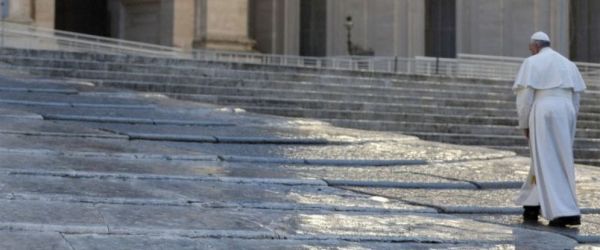In the last few weeks, our reflection has been moving, so to speak, within the orbit of the Paschal Mystery. Today we meet the one who, according to the Gospels, was the first to see the Risen Christ: Mary Magdalene. The Sabbath had ended not long before. On the day of the Passion, there had not been enough time to complete the funeral rites. For this reason, at that sorrow-filled dawn, the women went to Jesus’ tomb with aromatic oils. The first to arrive was Mary Magdalene. She was one of the disciples who had accompanied Jesus from Galilee, putting herself at the service of the burgeoning Church. Her walk to the sepulchre mirrors the fidelity of many women who spend years in the small alleyways of cemeteries remembering someone who is no longer there. The most authentic bonds are not broken even in death: there are those who continue loving even if their loved one is gone forever.
The Gospel describes Magdalene by immediately highlighting that she was not a woman easily given to enthusiasm (cf. Jn 20:1-2, 11-18). In fact, after her visit to the sepulchre, she returns disappointed to the Apostles’ hiding place. She tells them that the stone has been removed from the entrance to the sepulchre, and her first hypothesis is the simplest that one could formulate: someone must have stolen Jesus’ body. Thus, the first announcement that Mary makes is not the one of the Resurrection, but of a theft perpetrated by persons unknown while all Jerusalem slept.
The Gospels then tell of Magdalene’s second visit to Jesus’ sepulchre. She was stubborn! She went, she returned ... because she was not convinced! This time her step is slow and very heavy. Mary suffers twice as much: first for the death of Jesus, and then for the inexplicable disappearance of his body.
It is as she is stooping near the tomb, her eyes filled with tears, that God surprises her in the most unexpected way. John the Evangelist stresses how persistent her blindness is. She does not notice the presence of the two angels who question her, and she does not become suspicious even when she sees the man behind her, whom she believes is the custodian of the garden. Instead, she discovers the most overwhelming event in the history of mankind when she is finally called by her name: “Mary!” (v. 16).
How nice it is to think that the first apparition of the Risen One — according to the Gospels — took place in such a personal way! To think that there is someone who knows us, who sees our suffering and disappointment, who is moved with us and calls us by name. It is a law which we find engraved on many pages of the Gospel. There are many people around Jesus who search for God, but the most prodigious reality is that, long before that, in the first place there is God, who is concerned about our life, who wants to raise it, and to do this, he calls us by name, recognizing the individual face of each person. Each person is a love story that God writes on this earth. Each one of us is God’s love story. He calls each of us by our name: he knows us by name; he looks at us; he waits for us; he forgives us; he is patient with us. Is this true or not true? Each of us experiences this.
And Jesus calls her: “Mary!”: the revolution of her life, the revolution destined to transform the life of every man and every woman begins with a name which echoes in the garden of the empty sepulchre. The Gospels describe Mary’s happiness. Jesus’ Resurrection is not a joy which is measured with a dropper, but a waterfall that cascades over life. Christian life is not woven of soft joys, but of waves which engulf everything. You too, try to imagine, right now, with the baggage of disappointments and failures that each of us carries in our heart, that there is a God close to us who calls us by name and says to us: ‘Rise, stop weeping, for I have come to free you!”. This is beautiful.
Jesus is not one who adapts to the world, tolerating in it the persistence of death, sadness, hatred, the moral destruction of people.... Our God is not inert, but our God — allow me to say — is a dreamer: he dreams of the transformation of the world, and accomplished it in the mystery of the Resurrection.
Mary would like to embrace her Lord, but he is already oriented towards the heavenly Father, whereas she is sent to carry the news to the brethren. And so that woman, who, before encountering Jesus, had been at the mercy of evil (cf. Lk 8:2) now becomes the Apostle of the new and greatest hope. May her intercession also help us live this experience: in times of woe and in times of abandonment, to listen to the Risen Jesus who calls us by name and, with a heart full of joy, to go forth and proclaim: “I have seen the Lord!” (v. 18). I have changed my life because I have seen the Lord! I am now different than before. I am another person. I have changed because I have seen the Lord. This is our strength and this is our hope.
[Pope Francis, General Audience 17 May 2017]












